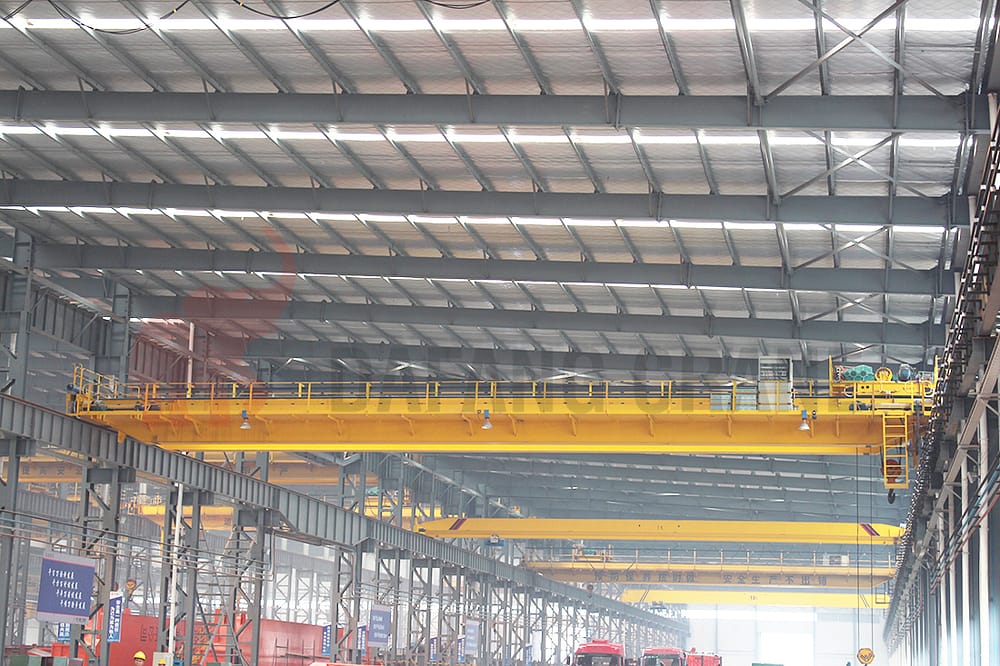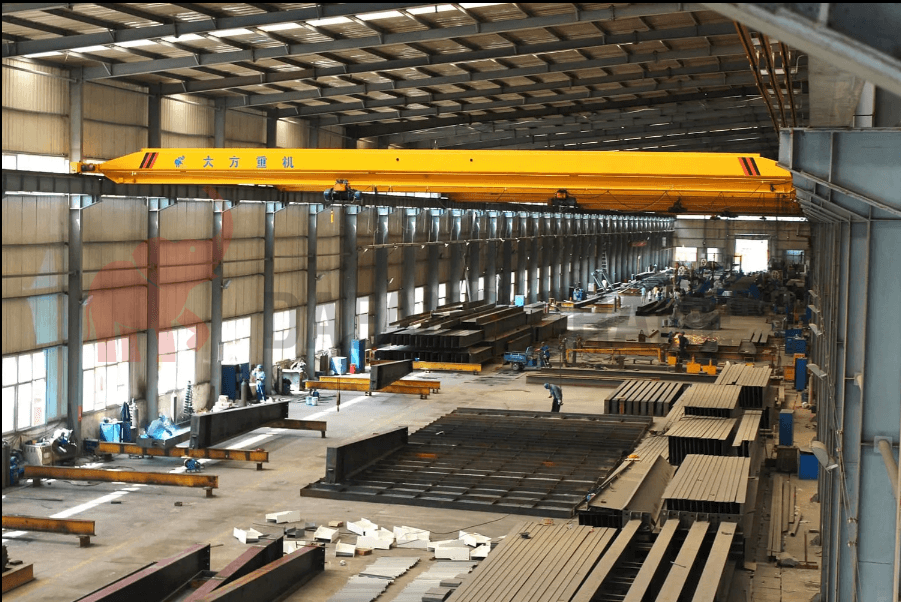Electric Overhead Cranes: Cost-Effective And Safe
Electric overhead cranes are an essential tool in many industries, providing efficient lifting and moving of heavy loads. These cranes are not only cost-effective but also offer a wide range of safety features to ensure the protection of workers and materials. In this article, we will explore the cost-effectiveness of electric overhead cranes, their safety features, applications, maintenance, and more.
What Are Electric Overhead Cranes?
Electric overhead cranes are powered by electricity and can be controlled using a wired pendant or wireless remote control. They typically consist of a large steel beam, known as a bridge, that is supported on either end by tall steel columns or gantries. The bridge is equipped with a trolley that runs along the length of the bridge on rails, and a hoist or lifting mechanism that can be lowered or raised to pick up and move loads.

Cost-Effectiveness Of Electric Overhead Cranes
Comparison With Other Types Of Cranes
When it comes to choosing the right crane, cost is always a factor. Electric bridge cranes are generally more cost-effective than other types of cranes, such as hydraulic or pneumatic cranes. This is because they require less maintenance and have lower operating costs. Additionally, EOT cranes have a longer lifespan, which means that they can provide long-term cost savings for businesses.
Long-Term Cost Savings
One of the most significant advantages of electric overhead cranes is their long-term cost savings. While the initial investment may be higher than other types of cranes, the reduced maintenance and operating costs over time make them more cost-effective in the long run. Electric bridge cranes are designed for durability and longevity, which makes them an excellent investment for any business.
Reduced Labor Costs
Another way that EOT cranes are cost-effective is through reduced labor costs. These cranes can be operated by a single person, which saves on labor costs for businesses. Additionally, electric overhead cranes can move heavy loads quickly and efficiently, which increases productivity and reduces the need for manual labor.
Safety Features Of Electric Overhead Cranes
Limit Switches
Limit switches are safety devices mounted on the crane’s hoist or trolley that prevent it from running over its permitted path. They work by cutting off power to the motor when they detect the crane nearing the end of its travel, preventing the load from colliding with the end stops. This feature ensures that the crane operates within its designated area, reducing the risk of accidents and damage to equipment.
Overload Protection
Overloading is one of the most common causes of accidents involving electric hoist cranes. To prevent this, overload protection is installed in the crane’s control system. The system monitors the weight of the load being lifted and automatically stops the crane if it exceeds the maximum capacity. This feature ensures that the crane operates within its safe working limits, reducing the risk of accidents and damage to equipment.
Emergency Stop Buttons
Emergency stop buttons are critical safety features that allow operators to quickly stop the crane’s motion in an emergency situation. These buttons are strategically located in easily accessible areas and can be activated by anyone in the vicinity, allowing for immediate shutdown of the crane. This feature helps prevent accidents and reduces the risk of injury to personnel.
Anti-Collision Devices
Anti-collision devices are safety features that prevent two cranes from colliding with each other while operating in the same area. These devices use sensors to detect the presence of another crane and automatically stop or slow down the movement of either crane to prevent a collision. This feature ensures that multiple cranes operate safely in the same vicinity, reducing the risk of accidents and damage to equipment.
Applications Of Electric Overhead Cranes
Manufacturing Plants
One of the most common applications of electric bridge cranes is in manufacturing plants. These cranes are used to move heavy materials and products from one location to another within the factory. They can be used to lift raw materials, components, and finished products. Electric overhead cranes greatly increase the efficiency of the manufacturing process as they can handle large volumes of materials quickly and safely.

Warehouses
Another important application of EOT cranes is in warehouses. Warehouses are used to store a wide range of products, from small parts to large equipment. Overhead cranes are useful in moving these products around the warehouse. They also help in loading and unloading of trucks and other vehicles. The use of electric overhead cranes in warehouses increases productivity and reduces the risk of injuries associated with manual handling.

Ports And Shipping Yards
These cranes are used to load and unload cargo from ships. They are also used to move containers within the port or shipping yard. Electric bridge cranes play a crucial role in the shipping industry by reducing the time it takes to load and unload ships, thereby increasing the efficiency of the port.
Maintenance Of Electric Overhead Cranes
Regular Inspections
Regular inspections are essential to ensure the safe and efficient operation of electric overhead cranes. Inspections should be carried out by trained professionals who are familiar with the equipment and its operating conditions. During inspections, technicians should check for signs of wear and damage on critical parts such as cables, chains, and hooks. They should also inspect the brakes, control systems, and motors.
Lubrication
Proper lubrication is crucial for the smooth operation of EOT cranes. Lubrication helps reduce friction between moving parts, which can lead to premature wear and tear. The lubrication schedule should be based on the manufacturer’s recommendations and operating conditions. Lubrication should be carried out by trained personnel using the correct lubricants.
Replacement Of Worn Parts
Over time, some parts of an electric overhead crane may become worn or damaged due to frequent use or exposure to harsh environments. It is important to replace worn or damaged parts promptly to avoid safety hazards and prevent further damage to the equipment. Replacement parts should be sourced from reputable manufacturers and installed by trained professionals.
FAQs
- What is the difference between an EOT crane and a traditional crane?
An EOT crane is operated remotely and has an overhead structure that allows it to move freely within the workspace, while a traditional crane is usually operated manually with limited mobility. - What kind of industries use electric bridge cranes?
Electric bridge cranes are commonly used in manufacturing, construction, warehousing, and transportation industries, among others. - How often do electric overhead cranes require maintenance?
Electric overhead cranes require routine maintenance, which includes inspections, lubrication, and repairs as needed. It is essential to follow manufacturer guidelines and ensure that trained personnel conduct any repairs or maintenance. - What is the maximum load capacity of an EOT crane?
The maximum load capacity of an EOT crane varies depending on the model and design. However, most electric overhead cranes can lift and transport loads weighing up to several tons. - Are electric overhead cranes expensive?
Electric overhead cranes can be more cost-effective in the long run, as they require less maintenance and have a longer lifespan, providing a faster return on investment due to their increased efficiency and reduced downtime.
Send Your Inquiry
- Email: sales@hndfcrane.com
- WhatsApp: +86-191 3738 6654
- Tel: +86-373-581 8299
- Fax: +86-373-215 7000
- Add: Changnao Industrial District, Xinxiang City, Henan Province, China





































































